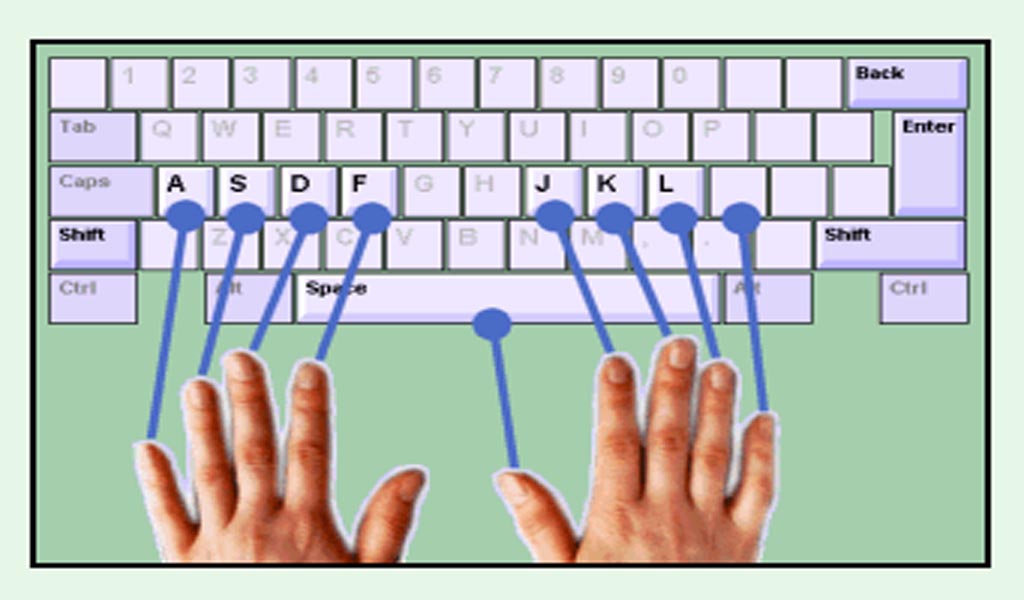

Looking beyond just the average typing speed, some exceptionally fast hunt and peck typists can reach up to 70 WPM, but the fastest touch typists can break 100 WPM! This means that as you get faster, the speed disparity between two-finger typing and touch typing only grows.
Touch typist full#
That adds up to a full hour of extra time every day! It would take closer to 1 hour to write the same emails if you were touch typing at a speed of 50 WPM. For example, if you write 10 emails a day for work, it might take you around 2 hours to write these emails using just two fingers at a rate of 27 WPM. While this might not seem like a huge difference on a minute-by-minute basis, the extra time it takes to only use two fingers certainly adds up. The average typing speed for someone touch typing with ten fingers is between 40 and 60 WPM. The average typing speed when using only two fingers is 27 words per minute (WPM) when copying and 37 WPM when typing from memory. To take advantage of this, we recommend you to take a custom practice lesson made up for your problem keys at least once a week. In other words, it’s better to learn to touch type now to avoid training the brain to learn to hunt and peck the keys and then having to unlearn it later. So, we can help you retrain yourself early on to avoid repeating the same mistakes and hardwiring them into muscle memory. And they are much harder to correct later. Practicing the wrong way can be detrimental, as bad habits tend to crop up when you’re under pressure. Typing without looking at the keyboard engages all four brain hemispheres. Put simply-the more you practice, the stronger your muscle memory will be. Thus, the more repetitions you’ve performed, the more your brain has to analyze. Repetition strengthens your brain’s memory of “the right way” to perform the task and consolidates the results into muscle memory. When your fingers know where to go automatically, it’s very relaxing and efficient. You’ll be able to focus on the content you’re typing rather than thinking about (or looking for) the next key to press. When you learn a new movement, your brain creates a memory of the pieces that make up that movement and stores it in your cerebellum. Scientists call this motor learning.Ĭommitting typing to muscle memory frees you from devoting mental energy to thinking about each letter as you type it. Although the cerebellum only makes up 10% of your brain volume, it contains over 50% of the brain’s neurons. Muscle Memoryĭespite its name, muscle memory isn’t stored in your muscles, it’s stored in a part of your brain called the cerebellum. With touch typing, each finger has its “home key” on the keyboard layout where it rests when it’s inactive. With hunt and peck, you might move your index finger up four rows or horizontally across the whole keyboard just to find the letter you need, which is ultimately inefficient and tiring. Thus, if you keep your fingers on the home row and only move the necessary finger, you’re guaranteed to go faster than if you’re moving your whole hands and wrists around the keyboard. This is designed so that your fingers move as little as possible. Like with a bicycle, each key on the keyboard has a finger that is responsible for it. Sure you could learn to hop back and forth pretty quickly, but you’ll never be as fast as if you were using your left foot for the left pedal and your right foot on the right pedal. Hopping from one key to the next with the same finger is almost like trying to pedal a bike with one leg. What is touch typing?Īccording to the Oxford dictionary, touch typing is “the practice or skill of typing using all one’s fingers and without looking at the keys.” This is learned over time with correct instruction and regular practice with two hands and all ten fingers. So why bother learning to touch type with all ten fingers if you can do fine with just two? The bottom line is that even the fastest hunt and peck typists will never be able to type as quickly as someone who is making use of all ten of their digits with the touch typing technique. Generally, this involves breaking focus from a computer screen in order to look down at the keyboard to type a word. Hunt and peck typing is a technique using one finger from each hand–usually the index or middle fingers–to “hunt” for keys on the keyboard. Below, we explore the most efficient method of typing for speed and accuracy.

So why bother learning to touch type with all ten fingers if you can do fine with just two? The bottom line is that even the fastest hunt and peck typists will never be able to type as quickly as someone who is making use of all ten of their digits. Like with any skill, typing with just two fingers takes practice, and with more practice, speed and accuracy will improve.

There are plenty of people who can type quickly using just two fingers.


 0 kommentar(er)
0 kommentar(er)
